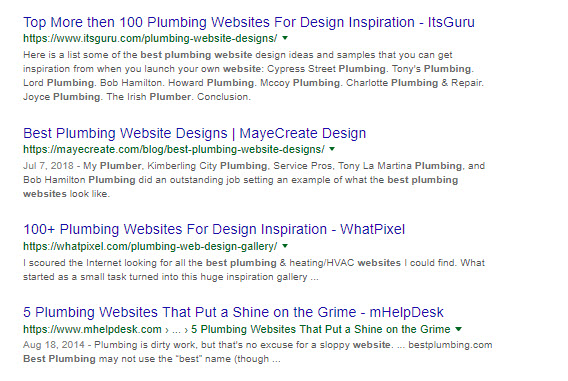Are click-through rates (CTR) important for page ranking on Google? This has always been speculation in the marketing realm. Getting organic traffic is the only way to get that page ranking you desire. Traffic is the lifeline of your website. So, you need to find ways to get more traffic.
You can do so by increasing your organic click-through rates. Let’s dive in deep into the subject and get more organic traffic to your website by improving your CTR.
What is organic click-through rate (CTR) and why is it important?
There is no definitive number or standard of organic click-through rates. What you can do is, work on improving the click-through rate. Click through rates can have a direct or indirect impact on your rankings.
You can get your game on, improve your rankings and increase organic traffic for free. You improve the CTR either directly or indirectly it doesn’t matter. As far as you see results, it is all worth it.
Google does not use the CTR as the direct factor to rank your site. But, you can improve traffic by enhancing your click-through rate. Vast traffic will signal Google that your content is relevant and engaging.
So get through those CTR’s by getting organic traffic by using the following techniques.
1. Optimize Your Meta Data
Meta Data plays the most vital role to get that finely crafted piece of article on the top ranking order. So your SEO needs to be a pro at describing the Meta Title and Meta Description.
-
Meta Title
Your meta title description is your voice in the SERP’s.
Your meta title is the voice of your website that needs to connect to the customers. So SEO’s you need to optimize it.
The metadata is your organic ad!
The first rule is that it should lead to the main keyword. But you also need to ensure that it mixed with engaging, readable and engaging prose.
SEO is no more just about emphases on keyword, it is more towards the quality of the content on the page. The keyword is, but an overly optimized keyword headline might bore the reader.
Standout in the noise and make your meta title of 70 characters or less. If it is longer than that there is a risk of Google truncating your message.
2.Meta description
Optimizing the meta description. You will want to give your user a detail explanation about your site and what the end user should expect to see through when he clicks.
Just like the meta title try to lead with the main keyword. Google will bold this if a users query matches with the unique description.

The meta description shall be under 160 characters. This way you are not taking any chance with Google, avoiding any truncation.

Research conducted by a content marketing specialist found that numbers can boost your CTR rate by 36 %. These numbers include prices, dates, etc making your title and description stand out in all the noise.
Meta description doesn’t have the same ranking authority as page titles. Write catchy and enticing metadata to increase the click-through rate.
3. Use Emotional Hooks
Get emotional with your hook up lines as we know people are emotional beings. People tend to engage on an emotional level crazily.
If you can inculcate a high level of joy, excitement, anticipation and other emotions in your title and description you will see the CTR rise. For instance, the title- Why Are People So Afraid Of SEO? The title covers the emotional hook (Afraid)
But this can work wonders only if the content in the article is relevant and engaging. If that is the case, then you are going to see those numbers going up.
4. Use Power Words
A passive audience means the death of the organic click-through rates. Catch the attention and interest with power words that will highlight your content and unique selling points like Premium, Huge, Powerful, Discover and Instant.
5. Call To Action
A strong call to action will compel your audience to interact with the content. A call to action can help you avoid a passive audience.
Using phrases like click on the template now to get 50 free ad campaigns, Buy Now, Get your free copy today, etc. You will see a higher CTR as compared to a page that doesn’t include them.
You don’t have to be a pro at writing to attach CTA (Call To Action). Many marketers use this technique, especially for PPC ads.
6. Know Your Competitor
You put all that time and effort in writing your headlines and find out that it is similar to your competitors in the SERP’s.
Your competition can decide the position of your page.
If they update their old content and it really strong and right, then it might affect your ranking. You need to check who else is landing on the same for the query.
For example, you have a plumbing business so search the term “best plumbing website” in the search engine.
Below is the organic listing of the query.

At the first look, you can see your competitors are trying to stuff the keywords to optimize listings.
If you notice the titles, they are not so attractive and the third listing seems like a copy of the first one.
If you see the first listing, it has a unique title with that emotional factor as stated above. The word inspiration here plays the role and plus exclusive content.
7. Test Your Headlines
Create a different headline for different platforms as your content will be measured on many platforms. This is the beauty of having numerous platforms on the digital marketing front.
You can start with Facebook and Twitter as ideal places to start. Create 4 to 5 versions of your headline and test them. You can use Facebook ‘insights’ and Twitter ‘Analytics’ for a fair and precise result about how your content is performing.
Measure your CTR on Google and once you know the right piece to get that engagement, use it in your latest content and watch the clicks soar.
Improve your click-through rate and grow organic traffic on your site by implementing these measures. What you can also do is check the most trending keyword on Google Console and craft content on the same. You will get that traffic on your site.
So increase that organic traffic with these natural methods.

